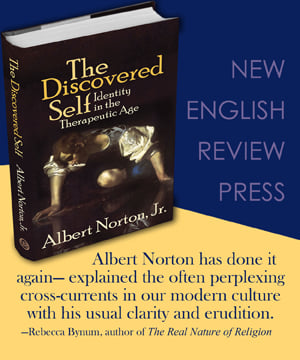by Kenneth Francis (April 2025)

For readers unfamiliar with ChatGPT, welcome back home after living for the past five years with a lost tribe in the Amazon Rain Forest, while relocating them and their huts, as thousands of acres of protected rain forest in the region are being cleared to build a highway for a UN climate summit.
The above introduction is not from the Babylon Bee. Unfortunately, it is true. The road aims to ease traffic to the city, which will host more than 50,000 people—including world leaders—at the conference this November. It could also have a negative effect on the wildlife adjacent the road and interfere/frustrate its breeding habits. I wonder what Amazon’s Alexa would say about that.
Now, back to Alexa’s AI sister, ChatGPT: This is an AI chatbot launched in 2022, which can almost instantaneously generate human-like conversational responses and enables users to “refine and steer a conversation towards a desired length, format, style, level of detail, and language.”
As for writing a work of literary high art, I see its many limitations and few virtues. Its construction of a literary work is a kind of reimagining of the Airport Novel Genre of crime, spy fiction, thrillers, romance, detective stories, etc.
This above aforementioned genre-Lite is now well-established as a pejorative term compared to high literature; similar to ChatGPT, it falls short of literary excellence and nuance to a reflective discerning artistic perceiver.
Let me give you an example of this: A couple of months ago, I read a story about a Paris theatre taken over by 400 homeless mostly African migrants who squatted for months in the building.
I found the story a bit humorous, with a sense of schadenfreude, as the building in question is the Gaîté Lyrique theatre, which is known for supporting left-wing causes, thus, welcoming migrants’ temporary refuge in the building last December 10, during which the men entered and later refused to leave the theatre.
I subsequently did a thought experiment with a friend of mine, when I emailed him a mock synopsis of a fictitious manuscript idea for a play called Papa Doc and the Zombies at the Haitian Ballroom Blitz.
My friend fed my synopsis into ChatGPT, and the super-fast result was quite impressive. Some might even regard it as a perfect synopsis structure for such a piece of drama. My original synopsis read as follows:
A retired British actor called Sir Michael Jaxson travels to Haiti in the aftermath of the Earthquake to build a theatre and get a quickie divorce from his wife. When the theatre is built, former deceased president, Francois Duvalier (“Papa Doc”), rises from his grave and is met by a band of 20 zombies who march with him to take over the theatre stage. On the stage, they perform a series of songs and dances (a homage to Michael Jackson’s “Thriller” video). Impressed by their performance, Sir Michael joins them on stage but they end up putting him into a big cauldron to cook him, as they dance around the pot singing the Steely Dan classic, “Haitian Divorce.” Sir Michael is rescued by his now-divorced ex-wife, and they both exit the country.
I will not include the ChatGPT version because it is too long and included dialogue, but in terms of literary quality, it was way inferior to what an artistic individual would write without the aid of AI. Despite this, a student who submitted such text would, if the lecturer did not analyse if for ChatGPT structure and narrative, probably give it an ‘A,’ though it’s also possible a Wokish professor might give it an ‘F,’ as she deemed it racist.
But in my opinion, some of the problems with the ChatGPT version are as follows: It had a formulaic style lacking in aesthetics. The style, if applied to another storyline, was like something written by a young liberal student who graduated in Creative Writing.
The ChatGPT ‘literature’/storyline is too slick, reminiscent of Pulp Fiction, and lacks poetic sentiments, something that a machine is incapable of emoting. Regarding aesthetics, it is a kind of Artificial Unintelligence, if you will, prone to cliches, and void of metaphors.
This should come as no surprise, as the multiple teams of hi-tech clones who input the narrative/literary instructions into AI are predominantly composed (not all) of the Woke sages of Silicon Valley. Many minds might make light work but too many ‘geeks’ can spoil the aesthetic ‘broth’ by saturating it with the groupthink trite of groundlings.
To draw an analogy in technological other art forms, it is like using Terragen (a scenery generator program) to create renderings of a mountain-range landscape and forest. The result would more than likely resemble the ‘happy’ trees, mountains, and lakes from a Bob Ross painting (almost photographic), as opposed to a Van Gogh or a Turner.
For a good example of comparisons, check out The Annunciation, by Leonardo da Vinci, at the top of this page. The expression on Archangel Gabriel’s face as he looks at Our Lady is incredible and could not be equaled by AI. In C.S. Lewis’s book Ferocious Love, he describes it as: “Pure, spiritual, intellectual love shot from their faces like barbed lightning. It was so unlike the love we experience that its expression could easily be mistaken for ferocity.”
And even when such technologies reimagine other such paintings from the great masters of yore, although impressive, they are a far cry from the beauty of the originals. There is something generic about them.
In terms of ChatGPT composing/writing music, I am reminded of Bob Dylan, when, in 1965, he started to record “Like a Rolling Stone.” During the first few rehearsals of the song, musician Al Kooper, who was not a session organ player but a guitarist, played organ on the track during rehearsals because he thought another musician in the studio played better guitar compared to his style.
There were murmurs from the producer, that, for the final cut, it might be wise to replace Kooper with a session organ musician, to which Dylan replied (paraphrase), “No, let him play it loud.” Dylan probably said that because Kooper’s playing was less formulaic and not unaesthetically slick and mundane.
When one listens to this great track, there is something dramatically raw and edgy about Kooper’s performance, as opposed to pitch-perfect blandness by a session player. In fact, Kooper’s playing makes that song the classic that it is.
Another song is Gerry Rafferty’s 1978 hit “Baker Street,” featuring an eight-bar saxophone perfectly-sounding riff by session musician Raphael Ravenscroft, which has been described as “the most recognizable sax riff in pop music history.”
But when compared to the great Stan Getz’s edgier, raw riff on “The Girl from Ipanema,” the aesthetics of the latter are far superior. One can almost sense Getz gently seducing the sax, almost kissing its ‘lips.’
More: The saxophone riff on Hurricane Smith’s song, “Oh Babe, What Would You Say,” to the discerning listener, also sounds raw and edgy, but to a philistine, it might sound like a goose being raped.
There is also a harmonica player, who I won’t name, who plays his instrument so perfect that it’s bland. When compared to Larry Adler’s haunting playing of the harmonica, there is no comparison, especially when one hears the theme of Midnight Cowboy.
Even in sports, the aesthetics of the Beautiful Game no longer exists, when we see soccer players looking like AI humanoid robots playing like supermen in a super-fast motion game of chess.
In the UK during the 1990s, a good example was the footwork and goals of the great Matt Le Tissier, whose spectacular goals were pitch-perfect, as if they were fired from a cannon; whereas the 1978 World Cup less-slick goal by Scotland’s Archie Gemmill was like poetry in motion. All that was missing in the choreography of that classic shot, when Gemmill danced around the players, was an excerpt from the soundtrack of Tchaikovsky’s Waltz of the Flowers.
Similarly, in the game of snooker, AI would construct the perfect player in the animated form of former world-champion player, Steve Davis: The most boring snooker player (to watch) of all time.
It would select Davis ahead of the most exciting player of all time, the late Alex “Hurricane” Higgens, whose unpredictable, unique, risk-taking style, and wild tactics, had millions of fans glued to their TV screens whenever he competed for the world title. Even when he lost, he played a more aesthetically pleasing game than the winner.
Regarding ChatGPT’s virtues: In its current form, I see it as a useful tool in the form of a template; a scaffold around which a single human artist can sculpt (tweak/edit) his metaphorical statue of The David, unlike a ChatGPT version, which might have exaggerated a certain part of David’s anatomy due to his warrior’s status in killing giant, Goliath.
More: AI/ChatGPT is a handy framework for paragraph structure, clarity, cohesion, and organization.
But AI lacks, or has its limits, in organic literature permeated with the creative imagination from the creative individual, human touch. It will never understand the immaterial mental states of the human Mind (more accurately described as the Soul). Machines do not have spiritual minds; they have technological artificial brains.
Let us face the aesthetic facts: Despite its virtues and impressive speed and organised structure: In film narratives/screenwriting, ChatGPT will never compare with the genius of a Fellini, Bunuel, Robert Bresson, Ozu, Satyajit Ray, or John Huston, et al.
Even the special effects in older movies are far more magical than the hackneyed CGI in today’s obvious-and-phony mega blockbusters. Such movies have reached a point where if Tom Cruise falls off the top of a skyscraper, half the audience yawns in anticipation of him being blown by a freak gust of wind into an open window and into a five-person jacuzzi where Salma Hayek sits naked, as Tom splashes into the tub to embrace her. I bet when he reaches the age of 90, he will be CGI de-aged, looking like he did in Top Gun, and staring in a remake of American Gigolo. It’s all so phony.
The magazine columnist, Taki Theodoracopulos, recently wrote: “Some time ago a friend had AI imitate my column and she played it back to me. I listened carefully. It was a good imitation of probably the worst writing I have ever done, clumsy, obvious, and phony.” (Taki’s Magazine, March 22, 2025)
Most of Taki’s writing over the past 40 years is witty and funny. A super-sharp, culture-watcher satirist that AI could never outwit, because AI cannot do satire, wit, or unpredictable denouements. Taki’s testament clearly shows that (especially from the discerning perspective of a theistic philosopher/neuroscientist) such machines can only comprehend the syntactics but not the semantics.
I hope this essay has brought some comfort to the few independent talented screenwriters out there. As for the teams of Hollywood mainstream laptop-tappers in the cafes downtown LA, I’m afraid things ain’t looking too good: They might have a new rival AI kid on the block, judging by the tonnes of predictable popcorn scripts churned out in recent years. ChatGPT might replace that—if it has not done it already!
Table of Contents
Kenneth Francis is a Contributing Editor at New English Review. For the past 30 years, he has worked as an editor in various publications, as well as a university lecturer in journalism. He also holds an MA in Theology and is the author of The Little Book of God, Mind, Cosmos and Truth, The Terror of Existence: From Ecclesiastes to Theatre of the Absurd (with Theodore Dalrymple), and Neither Trumpets Nor Violins (with Theodore Dalrymple and Samuel Hux). His most recent books are Theology in Music: How Christian Themes Permeate Classic Songs and Theology in Film: How Christian Themes Permeate Classic Movies.
Follow NER on Twitter @NERIconoclast
- Like
- Digg
- Tumblr
- VKontakte
- Buffer
- Love This
- Odnoklassniki
- Meneame
- Blogger
- Amazon
- Yahoo Mail
- Gmail
- AOL
- Newsvine
- HackerNews
- Evernote
- MySpace
- Mail.ru
- Viadeo
- Line
- Comments
- SMS
- Viber
- Telegram
- Subscribe
- Skype
- Facebook Messenger
- Kakao
- LiveJournal
- Yammer
- Edgar
- Fintel
- Mix
- Instapaper
- Copy Link







2 Responses
I’d like to recant a “job interview” I had recently — for a job I did not want. (I was persuaded to have a “chat”). It was for work to create an AI chatbot. I told the guy that I hated AI, didn’t know anything about LLMs, and was horrified by what he wanted to do. And I got the job! (There’s a lesson in there somewhere). I told him that, if I took it, I would not be using AI to build it, and that was all agreed. I wasted two weeks writing a technical design document and producing a quote. The response was that I must use AI to somehow do it quickly for nothing, and was given a lecture on how AI was going to take my job. I walked away. But, actually, think AI will be a good thing now. In the end it’s all people will be left with — a black mirror for themselves. *** Here’s another tale of woe. I know someone who uses AI to respond to emails. I spoke to him over the phone and found he was typing in what I said to an AI, which then told him what to say. He’s the forerunner for what is to come.
Jimi Hendrix took six months to write the perfect riffs in between the verses of Dylan’s ‘All Along the Watchtower’. It is a perfect composition with perfect guitar lines. I never thought it sounded artificial at all. It is wonderful. SRV took his band into a studio after gigging out for months and set everybody up with a mic and they recorded the same songs, as live, in a couple of days.
I understand and actually agree with your thesis. AI tends to sound dull and uninspiring. I am getting this stuff in my feeds for headline news and the mistakes are bountiful.
Modern art actually defeated the ‘representational’ arts of classical painting. Enough philistines went for the anything goes aspect and now it’s been run into the ground. Music has gotten worse. I agree about CGI. You want to see an amazing work of art that no AI could have created: Fantasia. But I suppose if the image generating program was fed that movie, you might get some of the same effect.
As an architect I spent three months of my life uploading EVERY single worthwhile photo and drawing into an AI program and the results are simply magical. They look great, but are based on my hand work. They don’t start from nothing.
Speaking of which: Gropius would come into his class room of fledgling architect wanna be’s and throw a pile of flat cardboard boxes demanding his students design something. It was called ‘starting from zero’.
And this is the main problem in art, music, and literature. People pick up guitars and don’t study how to play them. They just thrash along. Singers don’t study their art either. People now use AI to write their reports, emails and Christmas greetings. Writers check everything or polish things up with AI. It is a sloppy way to do anything. And it DUMBS down every creative urge. Kids don’t know how to write a sentence or a paragraph or a story. I asked my grand daughter if they use AI. She said it wasn’t allowed but she smiled and explained that they throw a few lines into CHAT gpt and ask it to regurgitate at an 8th grade level.